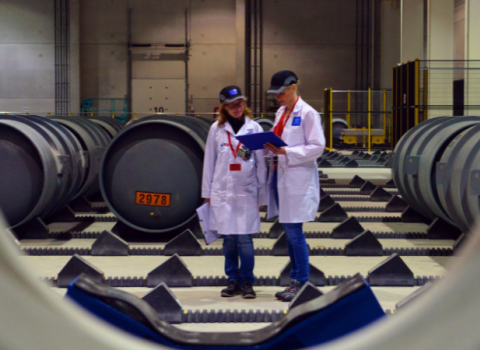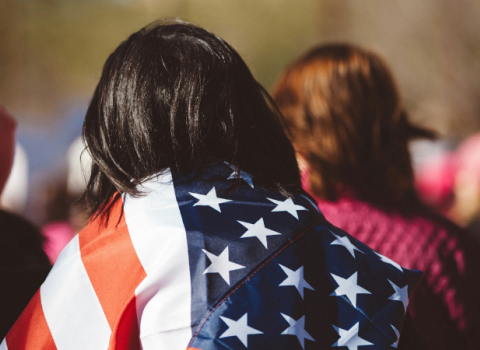Michel Claessens, who turned whistleblower against the megaproject in 2021, claims it deceived the public by ‘overselling’ fusion. More recently, ITER has dialled down its claims, and Claessens now says it is a ‘worthwhile project’

Inside ITER, the international nuclear fusion research and engineering megaproject in France. Photo: Flickr
The former head of communications at ITER has warned that the fusion energy industry is engaging in risky and potentially deceptive hype over the technology, skirting over the many technical hurdles which remain before fusion can provide meaningful benefits.
Michel Claessens, a controversial figure in the fusion world who in 2021 alleged that ITER was silencing employees who spoke out about problems, worries that some researchers have become complicit in what he calls “fusion propaganda”.
“We should be clear with the public,” Claessens told Science|Business. “We are still in the research and development phase. We're still far from commercial applications. I'm really upset and I don't think it helps, when people say fusion will be the energy of the future.”
ITER, arguably the world’s biggest scientific experiment, aims to demonstrate the potential for nuclear fusion to produce energy at its vast site in the south of France.
Dating back to the end of the Cold War, the core members are China, the EU, India, Japan, South Korea, Russia and the US. The UK was a member but decided to quit last year, preferring to invest in its own private fusion industry.
Claessens, a science communications expert who has literally written the book on ITER, has had a tumultuous relationship with the project, to say the least – one which illustrates the broader problems of trying to communicate hurdles to a technology while keeping politicians and the public enthused.
He was head of communications at ITER for four years before being fired by the incoming director general Bernard Bigot in 2015 (Claessens has never publicly gone into the details of exactly why).
Claessens then served in several ITER-related organisations, including as a policy officer in the European Commission, but continued to clash with ITER over what he thought were overly optimistic claims about fusion, spurring him to write a warts-and-all book about the project, which was published in October 2019.
Following this, in 2021 Claessens fully turned on ITER, accusing it before MEPs of trying to silence critical internal voices, after speaking to insiders who were unhappy with the management.
The core of Claessens’ criticisms of ITER, and the broader fusion industry, is that there is not enough scientific honesty about the remaining unsolved challenges and uncertain timescales.
Claessens was speaking to Science|Business to promote a new edition of his book, ITER: The Giant Fusion Reactor: Bringing a Sun to Earth, in which he says he was “complicit” and even contributed to “public deceptions” about fusion energy as head of communications.
“Definitely, fusion energy will not be the solution to the climate warming issue,” he said.
Unanswered questions
One of the core problems, says Claessens, is the extreme scarcity of tritium, the hydrogen isotope needed to power ITER’s reaction. Private fusion start-ups are also overwhelmingly relying on tritium too.
The fusion industry’s answer is tritium breeding, a process that should create more tritium during the reaction itself, but this is still unproven. “It is at least a question mark,” said Claessens.
Another big unknown is the economics of fusion power. In the popular imagination, fusion will provide near-free electricity; the European Commission in 2021 trumpeted the promise of “virtually limitless energy”.
But this is far from a certainty, even if the scientific challenges are solved, Claessens said. “The question of economic sustainability is so open today because these machines are very expensive,” he said.
ITER, itself only an experimental prototype not designed to produce commercial energy, has seen costs balloon and its estimated budget now stands at around €20 billion.
“To be economically feasible, you need to produce a lot of energy,” said Claessens. “Hopefully the next generation reactors will be cheaper – most probably, [but] we still don’t know.”
Another challenge is creating strong enough first wall materials that can safety encase ultra-hot plasma during a fusion reaction.
More honesty
ITER doesn’t seek to deny there remain significant challenges. And Claessens has had something of a reconciliation with the project since the arrival of a new director general, Pietro Barabaschi, in 2022, following the death of Bigot.
Upon taking up the post, Barabaschi immediately promised more honesty about ITER’s setbacks, saying, “The more you ‘decorate’ the truth, the harder it will eventually hit you back.”
One example of this new openness, said Claessens, was the removal of claims of “unlimited” energy on the ITER website. “Management now is trying to find the best solution in an open way, not hiding the difficulties,” he said.
“With Pietro’s arrival at ITER, there’s been a deliberate effort to look at how we communicate about fusion that is factual, avoids overpromising, and tries to address questions that fusion sceptics have in a fair and realistic way,” said Laban Coblentz, head of communications at ITER, who took over from Claessens in 2015.
But in the meantime, a new source of fusion excitement – and arguably hype - has emerged in the private sector. Since 2018, the number of fusion start-ups has more than doubled to 43, attracting a wave of investment money, but in many cases not yet enough to build expensive prototype plants.
In industry surveys, the majority of these companies think fusion power will deliver electricity to the power grid before 2035.
Claessens is very sceptical of this deadline. “I don't think it's realistic,” he said. Even when fusion reactors work, there’s then a whole next set of technological hurdles to get them to produce electricity, he said.
A new baseline
Barabaschi’s commitment to honest communication will be put to the test in May or June this year when ITER proposes a new ‘baseline’ - essentially a work plan that sets out when new milestones will be hit.
Since 2020, as assembly began, a series of faults discovered in certain parts, the pandemic, and demands for more information from France’s nuclear regulator, have stalled the project, and it looks likely that deadlines will be pushed back even further.
From his conversations with ITER insiders, Claessens anticipates the one of the key milestones – “first plasma”, when the reactor creates this matter state for the first time – will be delayed from 2025 by around five years. Les Echoes has reported a similar delay.
ITER is likely to announce that this first plasma will however be “augmented,” said Claessens – and therefore not quite comparable with the original 2025 deadline.
Meanwhile, the overall 2035 deadline for full fusion operation will remain unchanged, he said. “They may succeed, although I am quite sceptical,” Claessens said. “So many problems arose after just one year of assembly so you may extrapolate how many will appear in the next 10 years.”
Coblentz said it was “too early to provide any dates for the new proposed baseline” but the project would use the delay in assembly “to stay on track for the start of fusion operations as much as possible.”
For all his strife with ITER, Claessens still writes that it is a “worthwhile” project – and for geopolitical, not just technological reasons.
“Despite obvious management issues, 33 or 35 countries working collaboratively and building an experimental fusion reactor sends a strong message of hope and optimism to the world,” he writes in his updated book. “It is a unique experiment that, if successful, might change the course of civilisation.”





 A unique international forum for public research organisations and companies to connect their external engagement with strategic interests around their R&D system.
A unique international forum for public research organisations and companies to connect their external engagement with strategic interests around their R&D system.